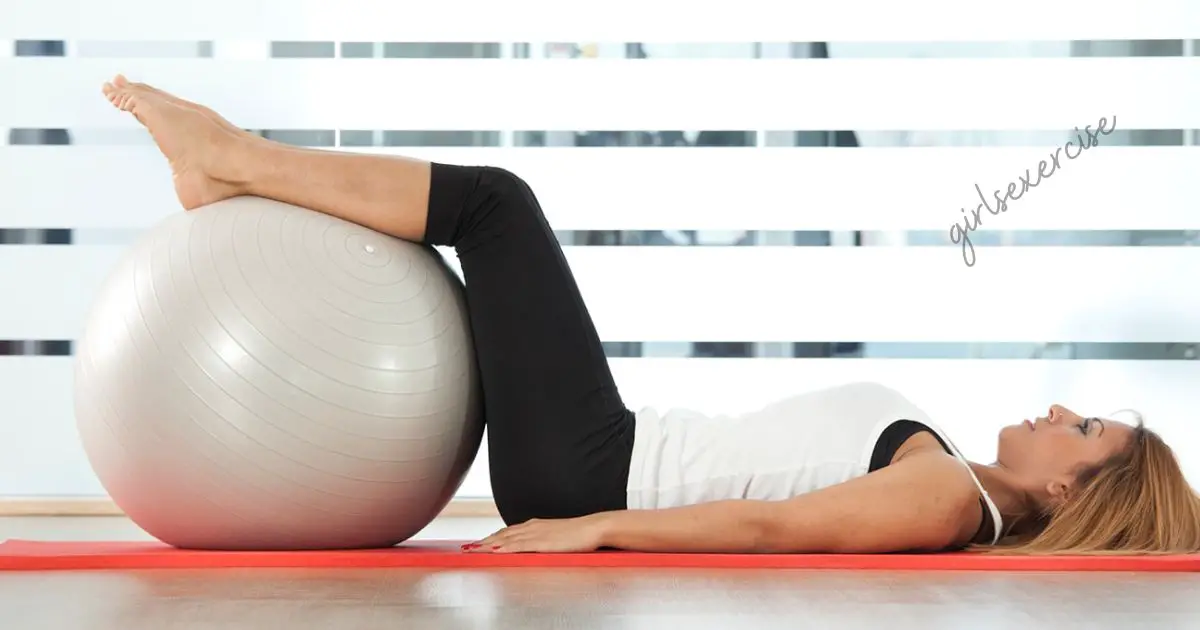The relevance and importance of Kegel exercises for females. These exercises are discreet yet powerful, as they can help prevent or alleviate a range of health issues, such as urinary incontinence, and pelvic organ prolapse, and even enhance sexual function.
Kegel exercises involve contracting and relaxing the pelvic floor muscles, which play a crucial role in supporting the bladder, uterus, and rectum. By incorporating these exercises into your routine, you’re taking a proactive step toward maintaining your health and well-being.
We’ll emphasize the friendly and non-intimidating nature of Kegel exercises, making them accessible to all women. Whether you’re a new mother looking to regain pelvic strength after childbirth, a woman in her golden years maintaining continence, or someone simply aiming to boost overall pelvic health, Kegel exercise for female can be a gentle, yet profoundly effective approach.
By the end of this discussion, you’ll have a deeper understanding of how to perform Kegel exercises and how they can contribute to your overall health and vitality. So, let’s get started on this journey towards greater well-being together!
Understanding the Importance of Pelvic Health:

Prioritizing Pelvic Well-Being:
Pelvic health is an essential facet of a woman’s holistic health and quality of life. In this comprehensive guide, we will delve into the profound significance of pelvic health and its far-reaching implications.
Understanding Pelvic Health’s Scope:
Pelvic health encompasses a wide range of physical, emotional, and social well-being aspects. It is not limited to physical symptoms but extends to emotional and psychological factors as well. Understanding this broad scope is vital in addressing pelvic health comprehensively.
The Physical Aspects:
Physical health in the pelvic region involves the well-being of organs, muscles, and tissues, including the bladder, uterus, and pelvic floor. Keeping these structures in optimal condition is essential for preventing conditions like urinary incontinence and pelvic organ prolapse.
Emotional and Psychological Well-Being:
Emotional and psychological factors play a significant role in pelvic health. Issues in this area can impact self-esteem, body image, and overall emotional well-being. Addressing these concerns is just as important as addressing physical symptoms.
Lifestyle and Habits:
Lifestyle choices, such as diet, exercise, and stress management, profoundly influence pelvic health. Healthy habits can prevent conditions like constipation and obesity, which are linked to pelvic health issues.
Quality of Life:
The quality of life is a crucial measure of pelvic health. It goes beyond the absence of disease and focuses on overall well-being. A healthy pelvic region enhances one’s ability to enjoy life to the fullest.
Preventive Measures:
An essential aspect of pelvic health is prevention. Regular screenings, pelvic exams, and a healthy lifestyle can reduce the risk of pelvic health issues. It’s important to be proactive in maintaining your pelvic well-being.
Seeking Professional Advice:
If you experience symptoms or discomfort related to pelvic health, don’t hesitate to seek professional advice. Consulting a healthcare provider or a pelvic health specialist can provide insights and guidance on addressing your specific concerns.
Open Communication:
Open and honest communication with healthcare providers is crucial. Don’t hesitate to discuss your pelvic health concerns, as early detection and intervention can make a significant difference in treatment outcomes.
Support and Education:
Support groups and educational resources can be invaluable. Connecting with others who have experienced similar challenges can provide emotional support and valuable insights.
Cultivating Self-Care:
Practicing self-care is an integral part of pelvic health. This includes stress management, relaxation techniques, and activities that promote emotional and physical well-being.
Age and Life Stages:
Understanding how pelvic health needs change with age and life stages is vital. Pregnancy, childbirth, menopause, and aging all have unique impacts on pelvic health.
Healthy Relationships:
Healthy relationships and open communication with partners are essential. Addressing pelvic health concerns together can strengthen emotional bonds and provide vital support.
Recognizing the multifaceted nature of pelvic health is paramount. It’s more than just physical well-being; it encompasses emotional, psychological, and lifestyle factors. By addressing these aspects comprehensively and seeking professional guidance when needed, women can prioritize and enhance their pelvic well-being, contributing to a happier, healthier, and more fulfilling life.
Exploring the World of Kegel Exercises:

Kegel exercises are a discreet yet remarkably effective means of maintaining and improving pelvic health. These exercises often go unnoticed or unmentioned, but their significance cannot be overstated. In this comprehensive guide, we will delve into the intricacies of Kegel exercises, their benefits, and how they can positively influence your overall well-being.
Understanding the Basics:
Kegel exercises, also known as pelvic floor exercises, are designed to strengthen the pelvic floor muscles. These muscles play a vital role in supporting your bladder, uterus (if you’re a woman), and rectum. By strengthening them, you can potentially prevent or alleviate issues like urinary incontinence and pelvic organ prolapse.
Locating the Pelvic Floor Muscles:
To perform Kegel exercises effectively, it’s essential to identify and engage the right muscles. The pelvic floor muscles are the ones you use to stop the flow of urine midstream. Another way to locate them is by imagining you’re trying to prevent passing gas. These muscles, once located, are the focus of your Kegel exercises.
Preventing Urinary Incontinence:
One of the primary advantages of Kegel exercises is their potential to prevent or alleviate urinary incontinence. This condition can affect people of all ages, and by strengthening the pelvic floor muscles, you can regain better control over your bladder.
Enhancing Sexual Health:
Kegel exercises can enhance sexual health and satisfaction. For women, stronger pelvic floor muscles can lead to more intense orgasms and improved vaginal tone. Men can experience better erectile function and potentially delay ejaculation.
Pregnancy and Postpartum Recovery:

During pregnancy, the pelvic floor muscles can undergo stress and strain. Engaging in Kegel exercises can help support these muscles, making pregnancy and postpartum recovery more comfortable.
Consistency is Key:
Like any exercise routine, consistency is crucial for results. It’s recommended to perform Kegel exercises daily. Over time, you’ll likely notice improvements in bladder control, sexual health, and pelvic strength.
Consulting a Healthcare Professional:
If you’re uncertain about how to perform Kegel exercises correctly or if you have specific pelvic health concerns, consider consulting a healthcare professional. They can provide guidance, tailor an exercise regimen to your needs, and address any questions or concerns you may have.
Incorporating Kegels into Your Routine:
Kegel exercises can be discreetly performed almost anywhere and at any time. Many people integrate them into their daily routines, such as during television commercials, while sitting in traffic, or even while sitting at their desks.
Kegel exercises offer a multitude of benefits and are accessible to people of all ages and genders. By dedicating some time each day to strengthening your pelvic floor muscles, you can potentially enhance your pelvic health, regain control, and improve your overall well-being. Remember, consistency and correct technique are key to reaping the rewards of Kegel exercises.
Benefits of Kegel Exercises for Women:

Enhanced Bladder Control:
Kegel exercises play a pivotal role in strengthening the pelvic floor muscles, which, in turn, contribute significantly to better bladder control. Women can experience reduced instances of urinary incontinence, especially after childbirth or as they age. This not only provides physical comfort but also boosts confidence and minimizes potential embarrassment.
Improved Sexual Satisfaction:
A stronger pelvic floor can lead to heightened sexual satisfaction. These exercises help in increasing the tone and flexibility of the vaginal muscles, enhancing sensations during intimate moments. For women, this can translate to a more fulfilling and enjoyable sex life, benefiting both partners.
Faster Postpartum Recovery:
Pregnancy and childbirth can place immense strain on the pelvic region. Engaging in Kegel exercises during and after pregnancy aids in quicker recovery by helping the pelvic muscles regain their strength. This promotes overall physical well-being during the postpartum period.
Prevention of Prolapse:
Pelvic organ prolapse is a condition where pelvic organs, such as the uterus or bladder, descend from their normal positions. Regular Kegel exercises can reduce the risk of prolapse by fortifying the pelvic floor, thus offering preventative measures against this potentially painful condition.
Increased Core Strength:
Kegel exercises also contribute to improved core strength. The pelvic floor muscles are an integral part of the core, and a strong core can lead to better posture, reduced back pain, and enhanced stability in day-to-day activities.
Heightened Self-Awareness:
Engaging in Kegel exercises cultivates a deeper connection with one’s own body. Women who practice these exercises often report increased body awareness, as they become more attuned to the sensations and control of their pelvic region. This heightened awareness can extend to other aspects of physical health and wellness.
Enhanced Recovery After Gynecological Surgery:

For women who undergo gynecological surgery, Kegel exercises are recommended by healthcare professionals to aid in post-operative recovery. Strengthening the pelvic floor can facilitate a smoother healing process.
Support During Menopause:
Menopause can bring about a range of physical changes, including a decrease in estrogen levels that affects the pelvic muscles. Regular Kegel exercises can help offset some of these changes, providing relief from potential discomfort and promoting continued pelvic health.
Improved Posture and Comfort during Pregnancy:
Pregnant women often experience changes in their posture and discomfort due to the additional weight they carry. Kegel exercises can help alleviate some of this discomfort by providing better support for the growing belly and reducing strain on the lower back.
Holistic Well-Being:
Beyond the specific benefits, Kegel exercises promote a sense of holistic well-being. They empower women to take control of their pelvic health, fostering a positive outlook on their overall physical and emotional wellness.
Incorporating Kegel exercises into your daily routine can have a profound and far-reaching impact on your life. These exercises are a testament to the power of simple, yet effective, practices that can enhance both physical health and emotional well-being.
The Ideal Timing for Kegel Exercises:
Determining the right time to commence your Kegel exercise routine is a thoughtful decision. In this guide, we’ll take a closer look at the factors, such as age and life events, that can influence the optimal starting point for Kegel exercises, ensuring a considerate and well-informed approach.
Post-Pregnancy Recovery:
For many women, Kegel exercises become relevant after giving birth. Pregnancy and childbirth can weaken pelvic floor muscles, and Kegel exercises can aid in their recovery. It’s advisable to wait until after childbirth and consult with a healthcare provider before starting a Kegel routine.
Perimenopause and Menopause:
The hormonal changes during perimenopause and menopause can affect pelvic floor health. Symptoms like urinary incontinence might arise during this stage. As such, Kegel exercises can be particularly beneficial for women in this age group.
Pelvic Floor Issues:
If you’ve experienced pelvic floor issues, such as urinary incontinence or pelvic organ prolapse, it’s often recommended to start Kegel exercises as part of a treatment plan. Consulting with a healthcare professional is essential to ensure that these exercises are safe and suitable for your specific condition.
Preventive Measures:
Some women opt to start Kegel exercises as a preventive measure. Strengthening the pelvic floor muscles earlier in life can potentially reduce the risk of issues in the future. This proactive approach can begin at any age, but it’s recommended to start with guidance and gradually progress.
Post-Surgery Rehabilitation:
Women who have undergone gynecological surgery, such as a hysterectomy, may benefit from Kegel exercises during their post-surgery recovery. These exercises can support healing and restore pelvic muscle strength.
Aging and Muscle Maintenance:
As women age, maintaining overall muscle health becomes increasingly important. Regular Kegel exercises can aid in preserving pelvic floor strength and may reduce the risk of issues like urinary incontinence. It’s crucial to adapt the exercises to your individual needs and seek guidance from a healthcare provider.
Personal Comfort and Awareness:
Ultimately, the decision to start Kegel exercises should align with your personal comfort and awareness of your body. Some women may feel the need to begin these exercises sooner due to specific circumstances, while others may choose to incorporate them later in life. The key is to listen to your body and make a well-informed decision.
The timing for starting Kegel exercises is a highly individual choice, influenced by factors like pregnancy, aging, pelvic health issues, and personal preferences. Consulting with a healthcare professional is advisable to determine the most appropriate time to begin your Kegel exercise journey, ensuring that your approach is safe, effective, and considerate of your unique needs.
Mastering Kegel Exercises with Precision:
Understanding the Basics:
Begin by grasping the fundamentals of Kegel exercises. These exercises involve contracting and relaxing your pelvic floor muscles, which are essential for various aspects of your health.
Identify Your Pelvic Floor Muscles:
Identify your pelvic floor muscles. One way to do this is to pause the flow of urine mid-stream during a visit to the restroom. The muscles involved in this action are your pelvic floor muscles.
Find a Comfortable Position:
Situate yourself in a comfortable position. You can perform Kegel exercises while sitting, standing, or lying down, depending on your preference. Choose the posture that suits you best.
Contraction Technique:
The primary action of Kegel exercises is the contraction of your pelvic floor muscles. Squeeze these muscles inward and upward as if you are trying to lift them toward your navel. Focus on the sensation of tightening in the pelvic region.
Hold and Release:
Once you’ve contracted your pelvic floor muscles, hold the squeeze for about five seconds. Ensure you continue to breathe normally during this phase. Then, release the contraction and let your muscles relax for another five seconds.
Set a Repetition Goal:
Establish a repetition goal based on your comfort level and fitness. A common starting point is to perform ten repetitions of five-second contractions, followed by five seconds of relaxation. Gradually, you can increase both the duration and repetitions as you progress.
Consistency is Key:
The effectiveness of Kegel exercises depends on consistency. Aim to incorporate these exercises into your daily routine. You can perform them discreetly at any time, whether you’re at home or in the office.
Avoid Overexertion:
While consistency is vital, avoid overexertion. Overworking your pelvic floor muscles can lead to discomfort or strain. Listen to your body and increase the intensity gradually.
Seek Professional Guidance:
If you’re uncertain about the correct technique or have specific concerns, consider consulting with a healthcare professional or a pelvic health specialist. They can offer personalized guidance tailored to your needs.
Patience and Progress:
Achieving the full benefits of Kegel exercises may take time. Be patient with your progress and stay committed to your routine. As you continue, you’ll notice improvements in bladder control, pelvic health, and even sexual well-being.
Integrating Kegel Exercises into Your Daily Life:
Let’s explore the practical ways to effortlessly weave Kegel exercises into your daily routine. Embracing these exercises can be a simple and comfortable addition to your daily life.
Understanding Kegel Exercises:
Start by comprehending what Kegel exercises are and why they are beneficial. Kegels help strengthen the pelvic floor muscles, contributing to better bladder control and enhanced sexual health.
Routine Reminders:
Set daily reminders on your phone or leave sticky notes in prominent places to prompt you to do Kegel exercises. Consistency is key, and these gentle reminders can help make them a part of your routine.
Incorporate into Existing Habits:
Link Kegels to an activity you already do regularly. For example, practice them during your morning or evening teeth-brushing routine. This association can make them feel like less of an extra task.
Breathing Techniques:
Incorporate Kegels into your deep breathing exercises. Inhale deeply, engaging your pelvic floor muscles, and then exhale, releasing them. This synchronization adds a meditative aspect to your Kegels.
Desk Chair Routine:
Utilize the hours spent at your desk. While sitting, contract and relax your pelvic floor muscles discreetly. It’s an inconspicuous way to get some Kegel exercise without drawing attention.
TV or Phone Time:
We all have moments of leisure, watching TV or browsing on our phones. Use these times to your advantage by doing Kegels. It’s a convenient and enjoyable way to incorporate them into your daily life.
Mindful Mornings and Bedtimes:
Begin and end your day with Kegel exercises. Incorporate them into your morning and bedtime routines to establish a consistent practice.
Exercise Breaks:
During your daily exercise routine, like stretching or yoga, consider including Kegels. These exercises complement other forms of physical activity.
Partner Support:
Share your intention with a trusted partner or friend. They can offer encouragement and reminders, making Kegels a shared journey.
Variety in Exercises:
Don’t limit yourself to a single Kegel exercise. Explore different variations and focus on both short, intense squeezes and longer, sustained contractions. This variety keeps your routine interesting and effective.
Pamper Yourself:
Treat yourself to Kegels while enjoying a warm bath or sitting in a cozy chair. This can make the exercise feel like a relaxing and self-care practice.
Progress Tracking:
Keep a journal to monitor your progress. Note any improvements in bladder control or other aspects of your life. Tracking your journey can be motivating and reinforce the habit.
Consult a Specialist:
If you encounter difficulties or have specific concerns, don’t hesitate to consult a healthcare professional or a physical therapist. They can provide personalized guidance and ensure you’re performing Kegels correctly.
Navigating Kegel Exercises Effectively:
We’re here to help you understand the common mistakes that can impact the outcomes of your Kegel exercises. Identifying these pitfalls is as valuable as recognizing the right practices, and it ensures you get the most out of your efforts.
Detailed Insights on Common Mistakes to Avoid During Kegel Exercises:
Improper Form:
One of the most prevalent mistakes in Kegel exercises is incorrect form. People often struggle to isolate and contract the pelvic floor muscles effectively. To rectify this, ensure that you’re targeting the right muscles. Imagine stopping the flow of urine mid-stream; these are the muscles you should engage. Contract them for about 3-5 seconds and then relax. Proper form is crucial to achieving results.
Overdoing It:
Some individuals assume that more is better, but overdoing Kegel exercises can lead to muscle fatigue. Just like any workout, it’s essential to allow your pelvic floor muscles time to rest and recover. Excessive contractions can result in muscle strain, which is counterproductive.
Inconsistent Routine:
Maintaining a consistent Kegel exercise routine is vital. Skipping workouts or performing Kegels irregularly can slow progress. To avoid this mistake, establish a schedule that fits your lifestyle and stick to it. Consistency is key to achieving lasting results.
Improper Breathing:
Effective Kegel exercises require proper breathing techniques. Holding your breath while contracting the pelvic floor muscles can increase intra-abdominal pressure, straining the muscles and potentially causing discomfort. Breathe naturally throughout the exercise to ensure optimal results.
Ignoring Relaxation:
Many people focus solely on the contraction phase of Kegel exercises and forget the importance of relaxation. Proper relaxation between contractions allows the muscles to recover fully, preventing tension build-up. Balance between contractions and relaxation is essential.
Lack of Patience:
Patience is crucial when it comes to Kegel exercises. Some individuals expect immediate results, which can lead to frustration. Understand that strengthening the pelvic floor takes time. Be patient and persistent in your efforts, and results will follow.
Inadequate Hydration:
Dehydration can hinder muscle function, including the pelvic floor muscles. Staying well-hydrated is essential for optimal muscle performance. Make sure to drink enough water throughout the day, which will support your Kegel exercises and overall health.
Disregarding Professional Guidance:
If you’re uncertain about your Kegel exercise technique or experience persistent issues, consulting a healthcare professional or a pelvic floor physical therapist is advisable. They are here to offer tailored assistance and make certain that you are headed in the right direction.
Not Tailoring Exercises:
Kegel exercises should be tailored to your specific needs. Pelvic health varies from person to person, and generic exercises might not address your concerns effectively. Seek guidance on customizing your routine to suit your unique situation.
Mind-Body Connection:
It’s important to establish a mind-body connection during Kegel exercises. Concentrate on muscle engagement and the sensation of release during relaxation. This thoughtful method improves the efficiency of your workouts.
Preparing for Motherhood: Kegel Exercises and Pregnancy
Are you on the beautiful journey of expecting a child? In this detailed guide, we’ll explore how Kegel exercises can play a pivotal role in promoting a healthy pregnancy and preparing your body for the miracle of childbirth.
Empowering Expecting Mothers: A Comprehensive Guide
Understanding Kegel Exercises:
Kegel exercises are not just about pelvic health; they are an essential part of the preparation for pregnancy and childbirth. We’ll delve into what these exercises are, how they work, and why they are crucial for expecting mothers.
Supporting a Healthy Pregnancy:
Pregnancy comes with numerous physical changes. Kegel exercises are a powerful tool to help you maintain pelvic health, which can alleviate discomfort and contribute to a smoother pregnancy journey.
Preparation for Childbirth:
The birthing process places significant demands on your pelvic floor muscles. We’ll provide in-depth information on how Kegel exercises can strengthen these muscles, making childbirth more manageable and reducing the risk of complications.
Postpartum Benefits:
Kegel exercises are not just for the prenatal period; they continue to be valuable in the postpartum phase. We’ll discuss how these exercises can aid in your recovery and restore pelvic strength after childbirth.
Pelvic Health and Comfort:
Expecting mothers often experience discomfort related to pelvic pressure and urinary incontinence. Kegel exercises can help alleviate these issues and improve overall comfort during pregnancy.
Step-by-Step Guidance:
Our guide offers a detailed walkthrough of how to perform Kegel exercises correctly. We’ll provide tips and advice on maintaining consistency and optimizing your routine for maximum effectiveness.
Consulting Your Healthcare Provider:
We emphasize the importance of open communication with your healthcare provider. They can offer personalized guidance, tailor your exercise routine to your specific needs, and address any concerns you may have.
Incorporating Kegels into Your Daily Routine:
Discover practical ways to integrate Kegel exercises into your daily life. We’ll provide insights on when and how to perform these exercises, ensuring that they become a natural part of your daily routine.
Partner Support and Encouragement:
The journey of pregnancy is shared with your partner. We’ll discuss how to involve your partner in your exercise routine, fostering mutual support and understanding.
Resources and Further Reading:
To empower you with comprehensive information, we’ll provide additional resources for further reading, enabling you to delve deeper into the world of Kegel exercises and pregnancy.
Conclusion:
Kegel exercises for females offer a simple yet highly effective method to improve pelvic floor strength and overall pelvic health. Regular practice of these exercises can lead to numerous benefits, including better bladder control, increased sexual satisfaction, and a reduced risk of pelvic floor disorders.
It is essential for women to incorporate Kegel exercises into their daily routine to maintain and enhance their overall well-being. It’s advisable to consult with a healthcare professional for personalized guidance and recommendations based on individual needs and concerns.
FAQs on Kegel Exercises for Females:
What are Kegel exercises for females, and why are they important?
Kegel exercises for females are a series of pelvic floor muscle contractions designed to strengthen the muscles that support the bladder, uterus, and rectum. These exercises are crucial because they help improve urinary control, enhance sexual function, and provide better support for pelvic organs.
How do I perform Kegel exercises correctly?
To perform Kegel exercises correctly, identify your pelvic floor muscles by squeezing as if you were trying to stop the flow of urine. Contract and hold these muscles for 5 seconds, then release for 5 seconds. Repeat this 10-15 times, three times a day. Make sure to breathe normally and avoid using your abdominal or buttock muscles.
What are the benefits of regularly doing Kegel exercises?
Regular Kegel exercises can lead to improved bladder control, reduced risk of urinary incontinence, enhanced sexual satisfaction, and better support for pelvic organs. They can also aid in postpartum recovery and help prevent pelvic floor issues later in life.
When can I start Kegel exercises, and can anyone do them?
You can start Kegel exercises at any age. They are suitable for most women, but it’s essential to consult with a healthcare professional if you have specific pelvic health concerns. Pregnant women and those who have recently given birth can benefit from Kegel exercises, but it’s best to get guidance from a healthcare provider.
How long does it take to see results from Kegel exercises?
The time it takes to see results from Kegel exercises varies from person to person. Some may notice improvements in a few weeks, while others may take a few months. Consistency is key, so it’s essential to continue the exercises regularly to experience the full benefits.




YouTubeConverter.one is the most effective device available
to convert videos from YouTube to MP3 and different codecs.
Completely I share your opinion. It seems to me it is very good idea. Completely with you I will agree.
https://virtual-local-numbers.com/countries/32-usa.html
Please, tell more in detail..